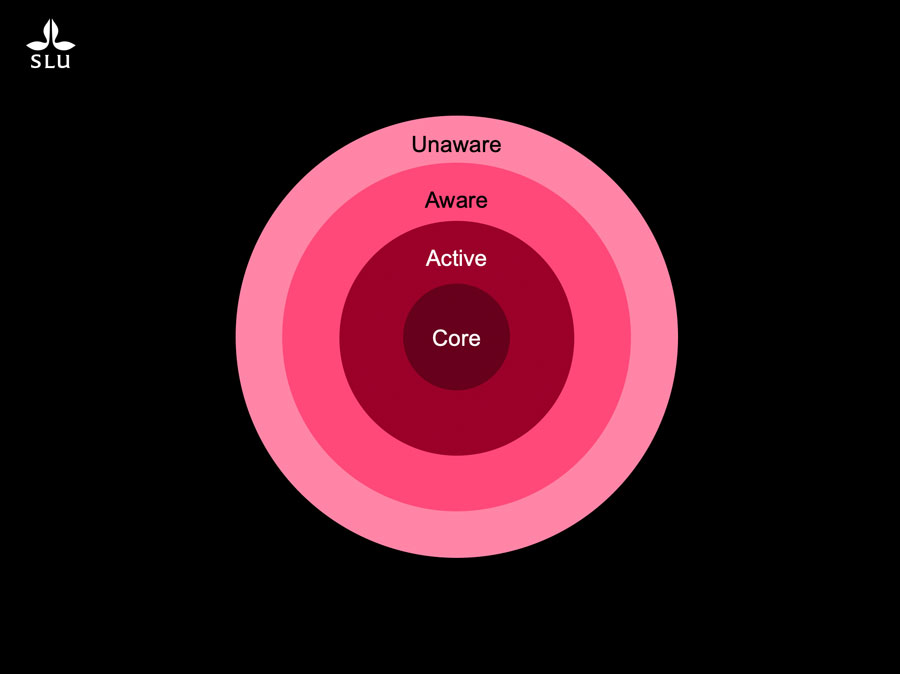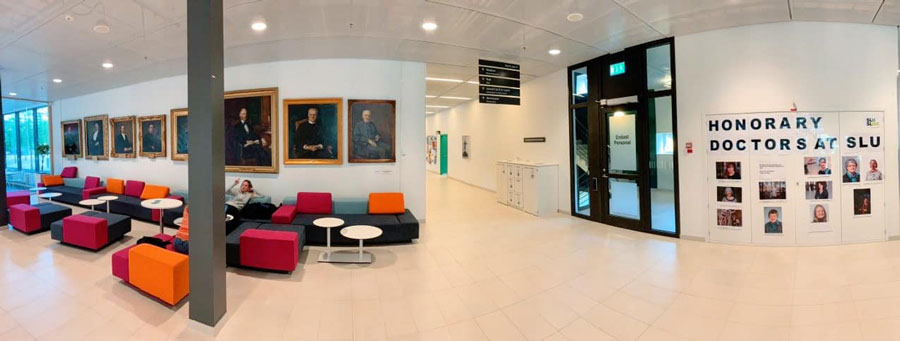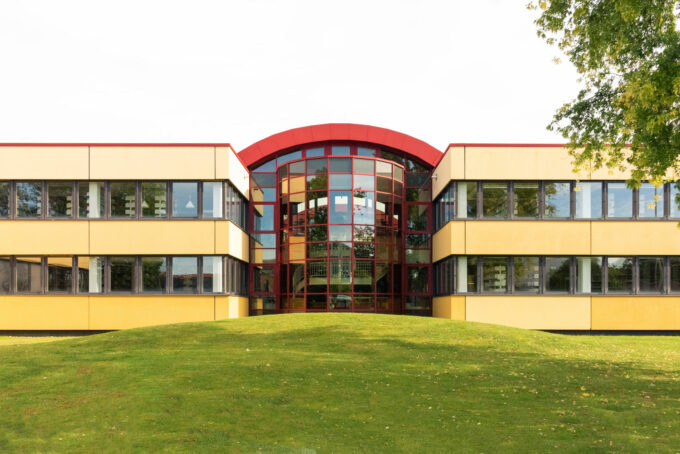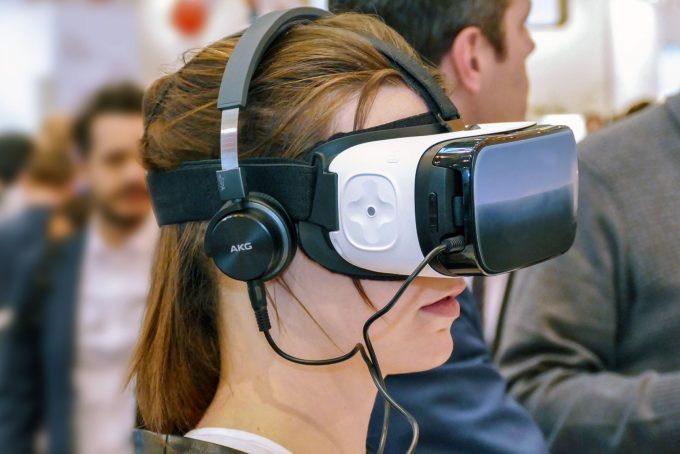
User Experience in Libraries: Insights from the SLU University Library Sweden
“To observe a student or researcher using a service is a quite powerful, sometimes even painful experience. It makes you realise that it’s perhaps not as self-explanatory as you might think,” says Kitte Dahrén from the SLU University Library, describing her experience with UX.
An Interview with Kitte Dahrén

The Swedish SLU University Library has about 50 employees. They are spread over several locations throughout the country; the main locations are Uppsala, Umeå and Alnarp. Kitte Dahrén is one of them. Her mission: to improve library services through user experience methods together with her colleagues.
For Kitte, it all started with a course on Design Thinking back in 2014: a pure epiphany for her. Since then, her potpourri of UX methods has grown steadily – usability tests, interviews, observations, cognitive mapping, card sorting…
In the interview, she tells us what her secret weapon is for motivating users, what her three most important learnings from seven years of User Experience are, why she considers it essential to bring all colleagues along, and what an onion has to do with it. Finally, Kitte also reveals who inspired her and gives book tips for UX beginners.
The interview is part of our series on User Experience in libraries. All interviews from the series can be found under the keyword “User Experience”.
Kitte, you are working in the field of User Experience (UX) at the library of the Swedish University of Agricultural Sciences (SLU). When and why did you start? What does that mean practically?
Back in 2014 I participated in a Design Thinking course which was kind of an epiphany for me. Before that, I often felt frustrated that librarians seemed to think that they focused on users’ needs, when they in fact just created services from their own point of view. During the course I learned how to research user problems and needs, prototype possible solutions and further iterate these. I felt empowered and finally had the tools needed to take action. This is where it all began for me on a personal level, but officially I got my position as UX Coordinator in 2017. At that point, User Experience was a goal in our library’s strategic plan and today the intention to work with user centred methods like UX methods is more established among staff, as well as in our management. UX work no longer depends on individuals being interested.

Illustration of the UX Button by Börje Dahrén©
My role is to coordinate the library’s internal method support called “The UX Button”, where I, together with my brilliant colleagues Ingela Wahlgren and Sarah Meier (who have graciously helped me with the answers to this interview) provide support to colleagues wanting to work with User Experience in order to improve services. The support is scalable, from just brainstorming potential UX methods to one of us being project leader. It all depends on the priority of the project and on how much time we can spare at that moment.
The SLU University Library has around 50 employees, spread over different campuses all over the country. Just as the university itself, we work together as one library and in consequence the UX method support needed to rely on digital tools long before the pandemic.
What are your goals with UX? Did you achieve them?
Perhaps it goes without saying, but our main goal with UX at our library is of course to provide relevant and usable services and systems to our users. The work bears fruit slowly but steadily, and perhaps one explanation to the slowness is our way of embedding UX. We don’t want an expert team doing all UX work, we want everyone on board. In order to understand why we choose to embed User Experience in this way, you need to know that our organisational structure and culture is not hierarchical, and our library has a strong internal culture of co-creation. Our professional roles and job descriptions are not set in stone and there is a lot of room for self-leadership.

Illustration of the onion is by Kitte Dahrén, adapted from a model by Malin Jenslin©.
The model, originally made by Malin Jenslin, explains our concept for embedding UX on an organisational level. It is like an onion, with all its layers.
- The innermost circle, called the core, is the library’s internal UX support – “The UX Button”. Our job is to both deepen and broaden the organisation’s knowledge on UX methods, and it is our responsibility to make sure that our library continues to move forward towards our strategic goals.
- In the second circle, you will find colleagues who are actively working with User Experience methods in order to make sure that our users’ needs of our services and systems are met. It is our management’s responsibility to create the best possible conditions and organisational structures for us to be able to work like this.
- In the third circle, you’ll find the people who are aware of UX and how they might contribute to the goal, but they are not actively engaged in any UX activity from day to day.
- In the outermost circle, we have the people who are still unaware of what UX is all about.
The long-term goal is that the outer circle no longer exists. And when it is no longer there, the innermost circle is not needed at all. When all our colleagues are either actively working with UX or are aware of its importance, our work is done.
Which UX methods do you apply at the SLU University Library?
We always choose methods depending on what we want to uncover. Through the years we’ve done usability testing, interviews, observations, cognitive mapping, card sorting and much more. We like to try out new methods by applying them to an actual project – learning by doing. At the moment, we are for example interested in finding out how students are using the library when it is unstaffed (they can access it with their key cards). Is it easy to understand how to use the self-service machine or find a book on the hold shelf? To survey this, we plan to experiment with letting users themselves document how they perform basic library tasks using an action camera and this is a method completely new to us.
Can you give us a practical example that worked, where you applied UX to solve a problem?
I think it’s important to point out that many small changes to our services as a result of findings from UX research leads to improvements for our users. User Experience work doesn’t have to result in cutting-edge innovation to be considered a success story. One example from our library is a project where my colleagues were creating a new search tool for the databases that the library offers. With support from “The UX Button”, they did usability testing as described by Steve Krug in Rocket Surgery Made Easy – The Do-It-Yourself Guide to Finding and Fixing Usability Problems. Observations of test participants trying to use the tool revealed what problems needed to be solved before launching and resulted in a more useful product.
I really recommend Krug’s method for usability testing – it’s easy to set up, can be done remotely, and always leads to actionable insights. To observe a student or researcher using a service is a quite powerful (and sometimes even a bit painful) experience because it makes you realise that it’s perhaps not as self-explanatory as you might think. We will present our work with remote usability testing during the pandemic at the excellent conference International Conference in Performance Measurement in Libraries (LibPMC) in November.
To apply User Experience methods, you need library users who are willing to participate. How do you manage to find and motivate them?
Since a couple of years back, our number one solution is a library user panel. Everyone can join the panel, it does not matter whether they are students, staff or not affiliated with SLU at all. We strive to work against discrimination in our services, so we wish to create a panel that is as diverse as possible.
When we want to recruit for a user study, we simply send out an e-mail to selected members of the panel asking them to participate and in most cases a few people volunteer. Students will receive a small gift as a thank you for their time, usually a movie ticket. But our experience is that users see the gift as a bonus and that they are happy to contribute to the improvement of services and systems that they rely on in their work or studies.
Our user panel mainly consists of students, we’ve had a harder time finding researchers and other employees willing to sign up (but this might also be because we’ve mainly marketed the panel towards students). When we recruit university employees, we often need to rely on personal contacts but usually we find people willing to participate in the end.
What are the – lets say – three most important lessons you have learned from applying User Experience methods at the SLU University Library?
- Design is harder than research. It’s easy to just gather a lot of data on user behaviours and needs, but you must properly analyse this data and design solutions to test and further iterate if you want to improve your services. Make sure to solve the right problem and not just the lowest hanging fruit, and don’t fall in love with your solution.
- You need to have a great deal of patience to embed UX in your organisation. I want to point out once again that the UX Button team is not employed to conduct all user research. If we did, perhaps that would make the quality of the actual research better because we’ve got experience. It would speed up the process for sure. But I think that the fact that our colleagues have ownership of their own UX research and design process makes it easier to get approval in the long run.
- Sometimes colleagues initially find UX methods scary because it might push them outside their comfort zone asking a student to draw a cognitive map or interview a researcher about their publication process. Give them time to articulate their fears and doubts, but at the same time don’t be afraid to challenge them. Colleagues that previously claimed they are useless at for example interviewing or ideating new solutions often overcome their fears and excel when they are allowed to practice their skills without being judged.
Have you also used methods that did not work at all? What have been your biggest or funniest fails?
I don’t see it as methods that don’t work, it’s things like suboptimal circumstances, bureaucracy or just rushing to conclusions when you analyse your data that make your project fail. And even then, I wouldn’t call it a failure because you always learn something valuable during the process, either about your users or about yourself and your organisation.
A couple of years ago, we did a touchstone tour (PDF) with a student and she showed us a wall in one of the campus buildings covered with gold framed portraits of prominent figures from the history of the university. These portraits happened to be all male, and she told us how this “wall of shame“ made her “blood boil”. We prototyped a wall of photographs of female honorary doctors at SLU to show that times are changing, and when we tested it, students and employees welcomed it.

The wall of shame and the prototype female honorary doctors
Since our prototype was just temporary, we eventually took it down. I know that as a result of the study, the university management planned for a project aiming to create a more modern and inclusive environment in the public spaces of this particular building, but so far nothing has materialised. I really dislike when you borrow your users precious time to help you, and then fail to deliver solutions to the problems they express.
What are your tips for libraries that would like to start with UX? What is a good starting point?
Don’t try to move mountains the first thing you do. Start small, and preferably with something where you control the whole process and can act on stuff that you learn. Let’s say that you and your colleagues argue about some detail, solve it by simply asking or observing your users. In order to make UX truly embedded you need your management on board, but with time and patience, this way of working in your team can create a ripple effect in your organisation.
UX and Libraries – Recommendations from Kitte Dahrén
- The Nielsen Norman Group offers a lot of useful articles and a newsletter well worth subscribing to.
- The book Rocket Surgery Made Easy – The Do-It-Yourself Guide to Finding and Fixing Usability Problems by Steve Krug is a perfect place to start if you want to try usability testing.
- I also recommend “Universal Methods of Design by Bella Martin & Bruce Hanington that contains guides to 100 research methods, synthesis/analysis techniques and research deliverables.
- Andy Priestner’s A Handbook of User Experience Research & Design in Libraries is a must have, as well as all the yearbooks from the UXLibs conference.
More about UX and libraries on ZBW MediaTalk
- The Hashtags #libux, #uxlib and #uxlibs on Twitter are filled with active conversations and ideas about UX in libraries.
- User Experience for Libraries: Insights from the University Library of the Cergy Paris University.
- User Experience in Libraries: Insights from the Digital Finna Services at the National Library of Finland.
- User Experience for Libraries: A Multi-site Approach at the University of Westminster.
- User Experience in Libraries: Insights from the Library of the University of Amsterdam.
- User Experience in Libraries: 4 Best Practice Examples from the ZBW.
- User Experience for Libraries: The Best Tools and Methods for Beginners.
We were talking to:
Kitte Dahrén works as UX coordinator and librarian at the SLU University Library, Sweden. She also coordinates the library’s strategic communication and is a part of the website editorial team. She can also be found on LinkedIn and Twitter
Portrait: Kitte Dahrén©
View Comments

Publishing Behaviour in Economics: Coronavirus Pandemic Turns out to Be a Temporary Shock
Has publication behaviour in economics changed due to the COVID-19 pandemic? An...



